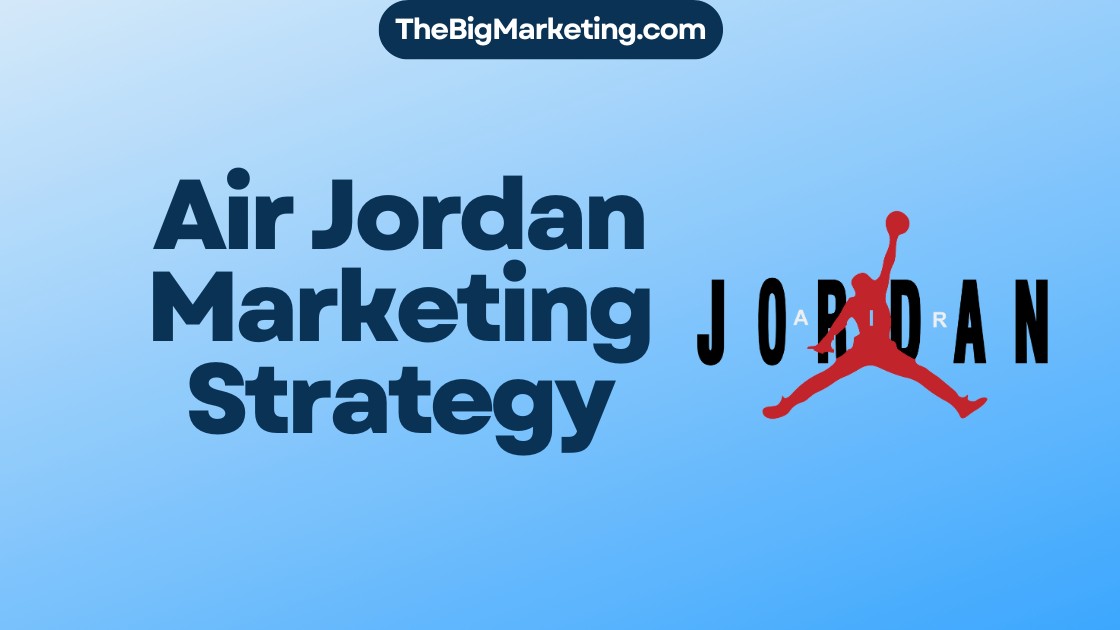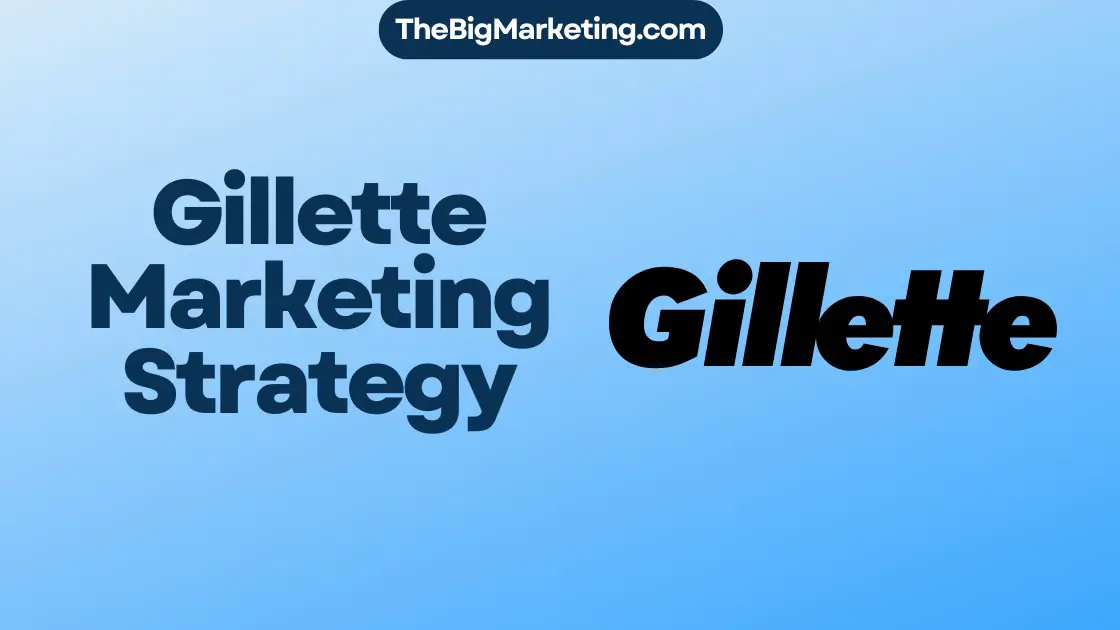In today’s world, marketing has undergone a significant evolution. Traditional marketing and digital marketing are the two main approaches that businesses use to connect with their target audience. In this article, we will explore the differences between old school marketing and digital marketing, discussing their advantages, disadvantages, and which one is the better choice for modern businesses.
Traditional marketing refers to the conventional methods of advertising and promotion, such as print ads, billboards, radio, and television commercials. On the other hand, digital marketing utilizes online platforms and strategies like social media marketing, inbound marketing, and online advertising to reach and engage with the audience.
As marketing continues to change, it is crucial to understand the benefits and drawbacks of each approach and determine the most effective strategies for your business. Let’s dive into more detail to help you make informed decisions about your marketing efforts.
Key Takeaways:
- Traditional marketing and digital marketing are the two main types of marketing used by businesses.
- Traditional marketing includes advertising through print, television, radio, and billboards.
- Digital marketing utilizes online platforms and strategies to reach and engage with the audience.
- Understanding the advantages and disadvantages of each approach is essential for effective marketing.
- Businesses should evaluate their target audience and goals to determine the best marketing strategies.
Now, let’s explore the advantages and disadvantages of traditional marketing in more detail.
Traditional Marketing: Advantages and Disadvantages
In the world of advertising and promotion, traditional marketing has stood the test of time. It encompasses various forms of offline advertising such as print ads, billboards, radio commercials, and television commercials. While traditional marketing has its advantages, it also comes with its fair share of disadvantages.
Advantages of Traditional Marketing
- Tangible Presence: Traditional marketing materials physically exist and can be touched, seen, and experienced by the target audience. This tangible presence can create a lasting impression and enhance brand recall.
- Localized Reach: Traditional marketing methods are often effective in targeting local audiences. Businesses can focus their efforts on specific areas or regions to attract potential customers in their immediate vicinity.
- Established Familiarity: Traditional marketing has been the norm for decades, making it familiar and trustworthy to older generations. This familiarity can be advantageous when targeting older demographics who may be less receptive to digital advertisements.
Disadvantages of Traditional Marketing
- Costly Investment: Traditional marketing methods can be expensive. Printing materials, renting ad spaces, and producing television or radio commercials can quickly add up, making it challenging for small businesses with limited budgets.
- Limited Reach: Unlike digital marketing, traditional marketing has a limited reach. It may only target audiences within a specific area or region, missing out on potential customers outside of the targeted locality.
- Difficulty in Tracking Results: Tracking the effectiveness of traditional marketing campaigns can be challenging. It is often difficult to measure the impact of print ads, billboards, or radio commercials, making it harder to optimize and refine marketing strategies.
While traditional marketing methods have their advantages, they also have inherent limitations that can hinder a business’s overall marketing efforts. In the next section, we will explore digital marketing and its advantages and disadvantages in comparison.
Digital Marketing: Advantages and Disadvantages
Digital marketing has become an integral part of businesses’ marketing strategies in today’s digital age. It utilizes the power of the internet and various online platforms to reach a wider audience and promote products or services. While digital marketing offers several advantages, it also comes with its own set of disadvantages.
Advantages of Digital Marketing
- Global Reach: One of the biggest advantages of digital marketing is its ability to reach a global audience. With the internet connecting people from all around the world, businesses can expand their reach beyond geographical boundaries.
- Cost-Effectiveness: Compared to traditional marketing methods, digital marketing is generally more cost-effective. Businesses can allocate their budgets efficiently by targeting specific audiences, eliminating unnecessary expenses.
- Measurable Results: Digital marketing allows businesses to track and measure the success of their marketing campaigns accurately. Various analytical tools and metrics provide valuable insights into customer behavior, engagement, and conversions.
Disadvantages of Digital Marketing
- Dependency on Technology: Digital marketing heavily relies on technology and internet connectivity. Any technical glitches or infrastructure issues can disrupt marketing activities, impacting campaign effectiveness.
- Information Overload: With the abundance of online content and advertisements, consumers can easily become overwhelmed by information overload. It becomes challenging for businesses to cut through the noise and grab consumers’ attention.
Overall, digital marketing presents numerous advantages in terms of reach, cost-effectiveness, and measurability. However, businesses need to be aware of the potential challenges related to technology dependency and information overload. By utilizing the right strategies and staying updated on industry trends, businesses can leverage digital marketing to their advantage.
| Advantages of Digital Marketing | Disadvantages of Digital Marketing |
|---|---|
| Global reach | Dependency on technology |
| Cost-effectiveness | Information overload |
| Measurable results |
A Comparison of Traditional Marketing and Digital Marketing
When it comes to marketing strategies, businesses have two main options: traditional marketing and digital marketing. Both approaches have distinct advantages and disadvantages, catering to different audiences and objectives.
Traditional Marketing
Traditional marketing encompasses traditional forms of advertising such as print ads, billboards, radio, and television commercials. It relies on tangible mediums to reach a local audience effectively. With traditional marketing, businesses can create a physical presence and establish brand recognition within a specific geographical area.
However, traditional marketing has its limitations. It can be expensive, requiring substantial investments in production and distribution. Additionally, reaching a larger audience beyond a specific location can be challenging and may require additional resources.
Digital Marketing
On the other hand, digital marketing utilizes the internet and various online channels to promote products and services. It includes strategies such as search engine optimization (SEO), social media marketing, email marketing, and content marketing.
Digital marketing provides businesses with a global reach, allowing them to connect with a vast audience regardless of physical location. It is also generally more cost-effective than traditional marketing, as online advertising platforms offer flexible budgeting options.
Moreover, digital marketing provides valuable data and insights that allow businesses to measure the success of their campaigns and make data-driven decisions. It enables targeted advertising, reaching specific demographics, interests, and behaviors, thus increasing the chances of engagement and conversion.
Comparison
When comparing traditional marketing and digital marketing, several factors come into play. Traditional marketing is effective for reaching a local audience and creating a physical presence, while digital marketing provides a global reach, cost-effectiveness, and data-driven optimization.
The following table provides a summary of the key differences between traditional marketing and digital marketing:
| Traditional Marketing | Digital Marketing |
|---|---|
| Physical presence | Global reach |
| Expensive production and distribution | Cost-effective advertising options |
| Local audience targeting | Data-driven targeting and measurement |
Ultimately, the choice between traditional marketing and digital marketing depends on the specific objectives, target audience, and budget of the business. In some cases, a combination of both strategies may be the most effective approach.
Choosing the Right Marketing Strategy
When it comes to marketing, businesses face a crucial decision: traditional marketing or digital marketing? To make an informed choice, it’s essential to consider the target audience and their preferences. Different factors such as age, tech-savviness, and sources of information play a critical role in determining the most effective marketing strategy.
For businesses targeting older demographics or industries where traditional media still holds sway, traditional marketing can be a viable option. Methods such as TV and radio ads, print advertising, and direct mail can effectively reach this audience segment. These traditional channels provide a tangible and familiar experience that resonates with those who prefer more conventional forms of communication.
On the other hand, digital marketing offers a range of opportunities for businesses aiming to capture younger or tech-savvy audiences. With the rise of social media, online advertising, and mobile usage, digital marketing provides a global reach like never before. It allows businesses to engage with potential customers on platforms they frequent and personalize their messages, tailoring them to individual preferences.
The decision-making process involves understanding the target audience’s habits, preferences, and preferred sources of information. Conducting market research and analyzing consumer behavior can provide valuable insights into the most effective marketing channels and strategies. By aligning marketing efforts with the target audience’s characteristics, businesses can optimize their return on investment and reach their goals.
Ultimately, a holistic approach that combines elements of both traditional and digital marketing may be the most effective strategy for many businesses. By leveraging the strengths of each method and tailoring marketing efforts accordingly, businesses can maximize their reach and impact.
Finding the perfect balance between traditional marketing and digital marketing requires careful consideration of the target audience and their unique characteristics. Whether it’s a local business targeting a specific demographic or a global brand reaching out to millennials, understanding the target audience is the key to making the right marketing strategy decision.
The Effectiveness of Traditional Marketing
When it comes to reaching certain demographics and establishing a strong local presence, traditional marketing can still be highly effective. This form of marketing targets older adults who may not be as technologically inclined and prefer more traditional advertising methods like television commercials and newspaper ads.
For businesses looking to expand within a specific area, traditional marketing can be a valuable tool. Local businesses can leverage tactics such as direct mail, tradeshows, and print advertising to reach their target audience effectively.
While digital marketing has grown in popularity, it’s important not to overlook the power of traditional marketing strategies. By understanding the preferences and behaviors of your target market, you can tailor your marketing efforts accordingly to maximize effectiveness.
With traditional marketing, businesses have the advantage of tangibility. Customers can physically see and touch advertisements, which can leave a lasting impression. Furthermore, traditional marketing provides a sense of familiarity and trust for older adults who have grown up with these forms of advertising.
However, it’s essential to note that the effectiveness of traditional marketing may vary depending on the target audience. Younger generations, who are more digitally savvy, may not respond as well to traditional marketing methods.
In conclusion, while digital marketing has become increasingly important in today’s technology-driven world, traditional marketing still holds its ground in reaching specific demographics and establishing local presence. By carefully considering your target audience and their preferences, you can determine which marketing strategies will be most effective for your business.
The Influence of Digital Marketing
Digital marketing has revolutionized the way businesses reach and engage with their target audience. In today’s age of social media and the internet, digital marketing holds immense influence and offers numerous advantages over traditional marketing methods.
One of the key benefits of digital marketing is its ability to reach a global audience. With online platforms and social media networks, businesses can connect with potential customers from different parts of the world, expanding their reach and increasing brand visibility. This global presence opens up new opportunities for growth and expansion.
Furthermore, digital marketing provides real-time data and insights that enable businesses to make informed decisions and optimize their marketing campaigns for better results. By analyzing metrics such as website traffic, conversion rates, and customer engagement, businesses can identify trends, understand their audience’s preferences, and tailor their strategies accordingly.
Another advantage of digital marketing is its cost-effectiveness. Compared to traditional marketing methods such as print ads or TV commercials, digital marketing channels offer more affordable options. Businesses of all sizes can leverage platforms like social media, email marketing, and search engine optimization to achieve their marketing goals without breaking the bank.
Moreover, digital marketing allows for precise targeting and personalization. Through strategies like email marketing and social media advertising, businesses can deliver personalized content to specific segments of their audience, increasing the chances of engagement and conversion. This level of targeting ensures that marketing efforts are focused on reaching the right people at the right time.
The influence of digital marketing continues to grow, as more and more consumers rely on digital channels for information, entertainment, and shopping. Businesses that embrace digital marketing strategies have a competitive edge in today’s fast-paced digital landscape, where staying relevant and visible is crucial for success.
In the next section, we will explore some of the key digital marketing strategies that businesses can utilize to drive their marketing efforts and achieve their business objectives.
Key Digital Marketing Strategies
In today’s digital landscape, businesses need to implement effective digital marketing strategies to stay competitive and reach their target audience. Here are some key strategies that businesses can utilize for their digital marketing campaigns:
1. Search Engine Marketing (SEO and PPC)
Search Engine Marketing (SEM) involves optimizing a website to improve its visibility on search engine results pages (SERPs). This strategy includes Search Engine Optimization (SEO), which focuses on organic search results, and Pay-per-Click (PPC) advertising, which involves paid ads displayed on search engine platforms. By leveraging SEO and PPC, businesses can increase their online visibility and drive targeted traffic to their websites or landing pages.
2. Display Ads
Display ads are visual advertisements that are typically displayed on websites, apps, or social media platforms. These ads can take the form of banners, pop-ups, or interactive media. Display ads are a great way to increase brand awareness, reach a wider audience, and drive traffic to a business’s website or landing page.
3. Email Marketing
Email marketing involves sending targeted emails to a specific group of people who have subscribed to a business’s mailing list or have shown interest in their products or services. This strategy allows businesses to nurture customer relationships, promote products or offers, and drive conversions. Personalization, segmentation, and automation are key elements of a successful email marketing campaign.
4. Inbound Marketing
Inbound marketing focuses on attracting and engaging potential customers by providing valuable and relevant content. This strategy involves creating and sharing blog posts, ebooks, whitepapers, videos, and other forms of content that align with the target audience’s interests and needs. By offering valuable content, businesses can establish trust, generate leads, and ultimately drive conversions.
5. Social Media Marketing
Social media marketing involves utilizing social media platforms such as Facebook, Instagram, Twitter, and LinkedIn to connect and engage with the target audience. This strategy includes creating compelling content, running targeted ads, and interacting with followers. Social media marketing allows businesses to build brand awareness, drive website traffic, and foster customer loyalty.
6. Content Marketing
Content marketing focuses on creating and distributing valuable, relevant, and consistent content to attract and retain a clearly defined audience. This strategy includes blog posts, articles, infographics, videos, and podcasts. By providing valuable content, businesses can position themselves as industry leaders, build trust, and drive organic traffic to their websites.
These are just a few examples of digital marketing strategies that businesses can implement to improve their online presence and effectively reach their target audience. It’s essential to analyze the business’s goals, target audience, and budget to determine the most suitable strategies to achieve success in the digital realm.
Traditional Marketing Methods
Traditional marketing methods have been utilized for decades by businesses to promote their products and services. While digital marketing has gained popularity in recent years, traditional marketing methods still hold relevance in certain situations. Let’s explore some of the key traditional marketing methods:
1. Direct Sales
Direct sales involve face-to-face interactions between sales representatives and potential customers. This method allows businesses to build relationships, address customer queries, and close sales on the spot. Direct sales can be particularly effective for high-value products or services that require personalized attention.
2. Direct Mail
Direct mail involves sending promotional materials, such as flyers, brochures, or catalogs, directly to the target audience’s physical mailbox. This method offers a tangible experience and can help businesses reach specific geographic or demographic segments. However, it may be less cost-effective compared to digital alternatives.
3. Tradeshows
Tradeshows provide businesses with the opportunity to showcase their products or services to a targeted audience within a specific industry. These events allow for face-to-face interactions, networking, and lead generation. Tradeshows can be a valuable platform for businesses looking to establish industry presence or generate new business leads.
4. Print Advertising
Print advertising includes placing advertisements in newspapers, magazines, billboards, or other physical publications. It offers businesses the ability to reach a local or regional audience effectively. Print advertisements can be eye-catching and memorable, providing an opportunity for businesses to increase brand visibility.
5. Referral Marketing
Referral marketing involves leveraging existing customers to refer new customers to a business. This can be done through incentivized programs, word-of-mouth, or customer testimonials. Referral marketing relies on trust and personal recommendations, making it a powerful method for attracting new customers.
6. Broadcast Advertising (TV and Radio)
TV and radio advertisements have long been popular traditional marketing methods for reaching a wide audience. They provide businesses with the opportunity to share their message through engaging visuals or audio. However, with the rise of digital streaming services and ad-blocking technologies, the effectiveness of broadcast advertising may vary.
While these traditional marketing methods have their advantages, it’s important to consider their limitations in today’s digital age. Businesses should evaluate their target audience, marketing goals, and available resources to determine the most effective marketing mix that aligns with their overall strategy.
The Future of Marketing: Traditional Vs Digital
As the marketing landscape continues to evolve, the future of marketing lies in the balance between traditional methods and digital strategies. While traditional marketing tactics have been effective in the past, digital marketing is gaining increasing importance due to technological advancements and shifting consumer behaviors.
Traditional marketing, such as print ads, billboards, and broadcast advertising, has long been a staple in reaching local audiences. However, digital marketing offers a global reach and provides businesses with the opportunity to target specific demographics and measure campaign effectiveness in real-time.
Businesses looking to thrive in the future must recognize the significance of digital marketing and incorporate it into their overall marketing strategy. By leveraging digital platforms, such as social media, search engine optimization, and email marketing, businesses can connect with their target audience on a more personal level and achieve long-term success.
Although traditional marketing will still have its place, integrating digital marketing techniques allows businesses to adapt to the changing preferences of consumers. In a world driven by technology and online interactions, businesses need to be where their customers are and provide relevant, personalized messaging.
The Advantages of Digital Marketing:
- Global reach
- Targeted advertising
- Measurable results
- Real-time data
The Advantages of Traditional Marketing:
- Effective for local targeting
- Established trust with traditional channels
- Reaches older, less tech-savvy audiences
By understanding the advantages and disadvantages of both traditional and digital marketing, businesses can make informed decisions about their marketing strategies. While the future of marketing will undoubtedly be digital-centric, a balanced approach that combines the strengths of both traditional and digital marketing is the key to success.
| Traditional Marketing | Digital Marketing |
|---|---|
| Local reach | Global reach |
| Established trust with traditional channels | Personalized targeting |
| Expensive | Cost-effective |
| Limited analytics | Real-time data and measurement |
Conclusion
After examining both traditional marketing and digital marketing, it is clear that each approach has its own advantages and disadvantages. Traditional marketing, with its tangible and localized nature, is effective for reaching specific audiences and establishing a local presence. On the other hand, digital marketing offers a global reach, cost-effectiveness, and the ability to track and analyze campaigns in real-time.
However, in today’s digital world, businesses should prioritize digital marketing to stay competitive and reach a wider audience. With the increasing reliance on technology and the pervasive use of social media and the internet, digital marketing provides the opportunity to target and engage with consumers on a global scale. By incorporating various digital marketing strategies such as search engine marketing, content marketing, and social media marketing, businesses can establish a strong online presence and generate measurable results.
Ultimately, the success of a marketing campaign lies in finding the right balance between traditional and digital marketing, taking into consideration the target audience, reach, cost, and effectiveness. While traditional marketing methods may still have value for certain businesses and demographics, the future of marketing undoubtedly lies in the digital realm. By embracing digital marketing and staying abreast of the latest trends and technologies, businesses can position themselves for long-term success in an increasingly digital landscape.
FAQ
What is traditional marketing?
Traditional marketing includes forms of advertising like print ads, billboards, radio, and television commercials.
What are the advantages of traditional marketing?
Traditional marketing is tangible, reaching local audiences effectively.
What are the disadvantages of traditional marketing?
Traditional marketing can be expensive and has a limited reach compared to digital marketing.
What is digital marketing?
Digital marketing utilizes the internet and includes various forms of advertising like social media, email marketing, SEO, and PPC.
What are the advantages of digital marketing?
Digital marketing has a global reach, is cost-effective, and provides measurable results.
What are the disadvantages of digital marketing?
Digital marketing is dependent on technology and faces information overload challenges.
How do traditional marketing and digital marketing compare?
Traditional marketing is tangible and suitable for reaching a local audience, while digital marketing has a global reach and provides cost-effective and measurable results.
How should businesses choose the right marketing strategy?
Businesses should consider their target audience, where they get their information from, and make an informed decision based on factors like age and preferences.
Who is traditional marketing effective for?
Traditional marketing can be effective for reaching older adults who are not tech-savvy and prefer traditional forms of advertising like TV and newspapers. It can also be useful for local businesses looking to establish their presence in a specific area.
What digital marketing strategies should businesses use?
Digital marketing encompasses strategies like search engine marketing, display ads, email marketing, inbound marketing, social media marketing, and content marketing. Each strategy should be tailored to the business’s goals and target audience.
What traditional marketing methods are still used today?
Traditional marketing methods include direct sales, direct mail, tradeshows, print advertising, referral marketing, and broadcast advertising (TV and radio).
What is the future of marketing?
Both traditional marketing and digital marketing will continue to play a role, but digital marketing is becoming increasingly important due to technological advancements and changing consumer behaviors.







